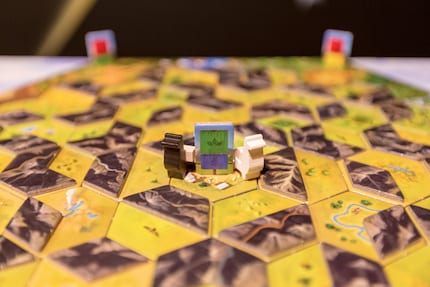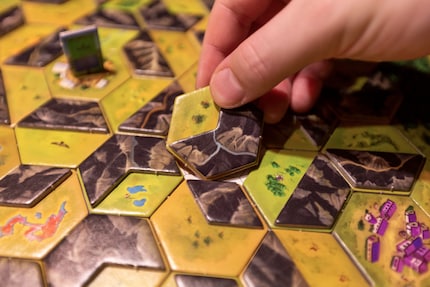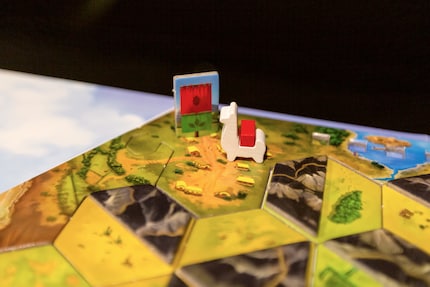
Product test
Putting award-winning «Magic Mountain» to the test
by Katja Fischer

Alongside beautiful artwork, the board game P'achakuna has compelling game mechanics. It’s ideal if you want to spend cold, grey winter days on an imaginary holiday in South America.
The soles of my hiking boots are about to fall apart. The blisters on my feet are so painful that continuing to walk seems almost impossible. It’s a steep uphill trek plus an equally steep downhill one to the next village. Luckily, a llama is keeping me company on this dangerous path through the Andes, hauling all my supplies and transporting the dyes I’m peddling.
In reality, all of this is taking place at my kitchen table, where I’m playing P’achakuna with a friend. The board game manages to mentally transport me to another continent.
P'achakuna is a competitive board game for two people, whose main goal is to trade natural dyes and white wool. To do this, you'll have to trek with llamas through the Andes and deliver the dyes to various villages. Once you’ve reached a village and completed a trade, you can keep the dyed yarn, and get a new dye. The latter of which needs to be transported to another village. The first player to collect all seven coloured yarns wins the game.
1. Turning
Before you move your llama, you can rotate one terrain tile. Later in the game, you can use your dyed yarn to buy additional spins. However, only the llama-free tiles are allowed be turned.
2. Moving
Now you'll set off on a journey with your llama, advancing at least one space. You can move your llama forwards for as long as your chosen terrain continues uninterrupted across the tiles. If you manage to reach a village, your llama needs to rest.
3. Trading
In the village, you’re allowed to trade your goods. Here, it’s important to make sure that the dye you’ve transported matches the colour of the village flag. Having the same colour as the small lower flag secures the traded resources a spot in your personal supply. And if the colour matches the larger upper flag, you get double.
If you don't have the traded resource in your supply yet, you can put it into one of the seven slots in front of you. You can use any extra resources of the same colour to either turn terrain tiles or buy new llamas. One llama costs you four resources, and you can own a maximum of three llamas.
4. Refill
After your llama has dropped off its cargo and you’ve struck a deal with the villagers, you’ll get a new resource in the colour of that village. After that, it's your opponent's turn.
Game over
The player to have at least one of all seven resources in front of them wins the game.
Before the game had even started, I was impressed by the artwork by Finnish designer Johanna Tarkela. The realistic landscapes mentally transport me to the South American Andes, allowing me to completely immerse myself in the world of the game. In that respect, P'achakuna has certainly won the beauty contest.
I’ll be cracking out P’achakuna at my next game night: wrecking my hiking boots and getting blisters on my feet, all while sitting at the kitchen table.
I get paid to play with toys all day.

The board consists of several hexagonal terrain tiles, which can be turned during the game. The green side of the tile represents a valley, with the black side representing the mountain. At the beginning, you and your opponent each have one llama. You can choose the colour of the llama yourself. The white llama can only move forward in the valleys, whereas the black one is restricted to the mountains. Later in the game, you can use dyed yarn to buy more llamas. Both of you take the same starting position, in the white village in the middle of the board.


P'achakuna was developed by two Swiss game designers during their bachelor studies at ZHdK: Stefan Kraft and Moreno Vogel. Thanks to them, the game mechanics shine alongside the artwork. The game principle of turning the tiles and trading in the villages is easy to understand. But not too easy. In fact, I often thought long and hard about a move before executing it – partly because I wanted to collect all the dyed yarns as quickly as possible, but partly because I wanted to scupper my opponent by turning the tiles. So, you need to be thinking a few steps ahead in order to win. These strategic considerations add depth to the game, resulting in exciting, hard-fought stand-offs.